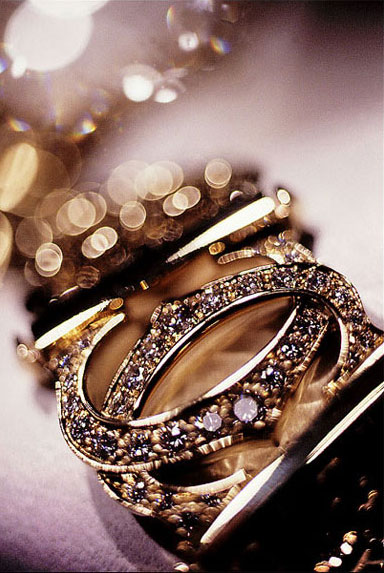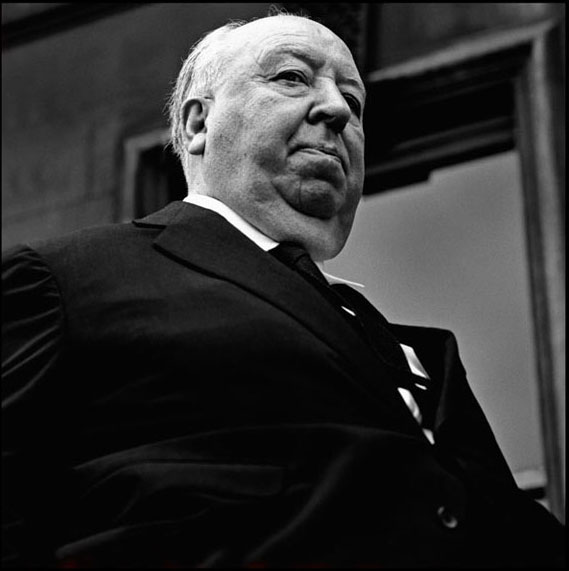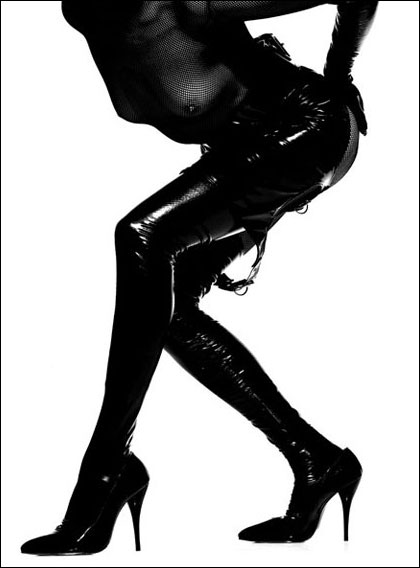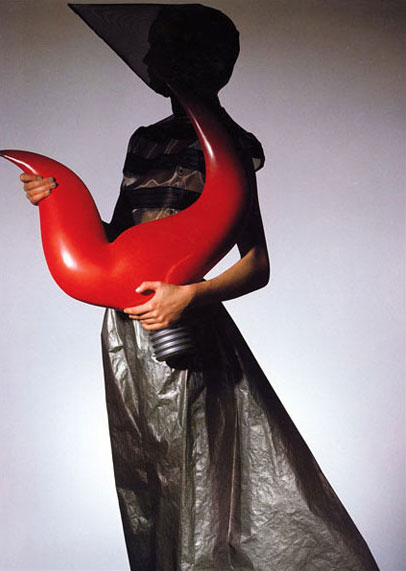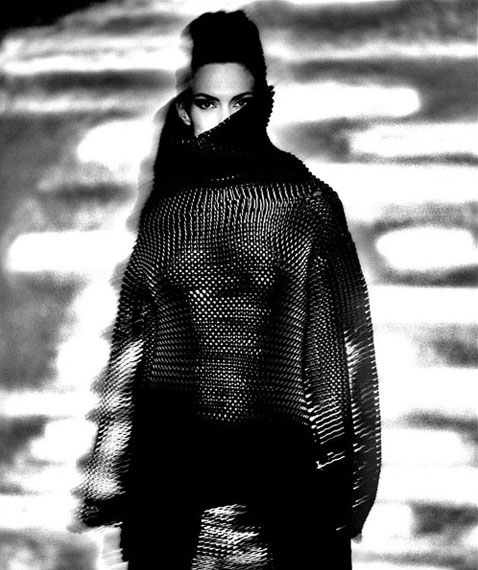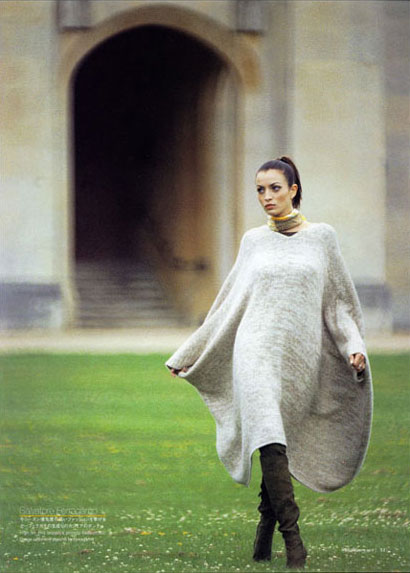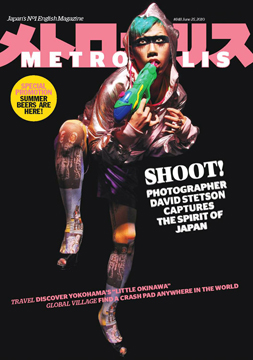|
From PHOTOWORKSHOP.COM Cover Stories David Stetson is a gifted photographer, designer and film director. He launched his career as a fashion photographer in his native city of London, and eventually in New York at a studio on Manhattan's Park Avenue South. He has photographed Sophia Loren, Alfred Hitchcock, Placido Domingo, and the late Princess Diana. His clientele includes luxury brands like Christian Dior, Givenchy, Guerlain, Guy Laroche, and Yves Saint Laurent, and his fashion photos have appeared in Vogue, Cosmopolitan, Glamour and Harper's Bazaar. He's also been a director & cameraman for music videos and T.V. commercials. Stetson currently resides in Tokyo, and is working on a variety of photography and film projects.
Double Exposure: How did you first become interested in photography? David Stetson: When I was about 10 years old, I had a friend in school whose dad was an amateur photographer. On a few occasions he showed us how prints were made in the darkroom. At the time it seemed to me like magic, watching in fascination as the image slowly appeared onto a blank piece of paper... I guess the memory just stayed with me. (Strangely enough I think my friend grew up to become an accountant or something like that...go figure!) DE: I know that you went to art school in England and film school in the U.S. Are you formally trained in photography? DS: If you mean, did I learn photography in school? the answer is no! If my time at art school taught me one thing, it was the truth in the expression that... "Those who can, do... Those who can't, teach!" So I dropped out. I had always wanted to be an artist, but I felt that my talent as a painter was not sufficient for me to survive to any great degree. One thing I knew for sure was that whatever I did with my life, it would have to involve "visual expression." Having a minor, yet longtime interest in photography, I bought a camera to see what I could do. The results weren't too bad, so I figured I'd "give it a shot." For me, being a photographer started as a compromise to not being a painter, but it soon became much more than that. However, I had no intention of going back to school to study photography. I figured that practical experience in a professional studio would be significantly more valuable... probably the best decision I ever made, although I wore out my shoes walking around London trying to find a job as an assistant. You see, in those days, (the late sixties) thanks to films like "Blow Up", everyone (if you weren't in a rock band) wanted to be a "groovy" photographer.
I found work and spent the next four years working like a slave for practically no money, as an assistant to a succession of photographers in a wide variety of fields. I learned a lot from some and not so much from others. I could mention a few, but you'd probably not know them from Adam--with the possible exception of a great guy named John Kelly, who was for a long time The Beatles' photographer. He taught me a lot, and not only about photography. I wanted to be a photographer who "just takes pictures"--I didn't want to be a particular kind of photographer. Different fields in photography are almost like different professions unto themselves, with totally different parameters and protocols, the "only" common denominator is the fact that all photographers use cameras. However, I soon discovered that in order to succeed, I'd need to specialize in one category or another. In making my choice, it simply occurred to me that, of all the photographers I'd worked for, the "fashion guys" had more fun than anyone else. So the "second" best decision I ever made came easy...I decided to become a "fashion" photographer. DE: Who are your influences? Did you have any mentors in this industry? DS: My strongest influence was, is and always will be Irving Penn. Essentially, the "stark fullness" of his black-and-white images still fill me with inspiration. On occasion I have been fortunate enough to have people remark that some of my exhibition work bears a resemblance to Irving Penn's photography... I take that as the ultimate compliment. It has been my intent on occasion to emulate his style and incorporate it into work that I have offered as a tribute to him.
Finding mentors in this business is a whole other story. It's difficult for the simple reason that from my experience most professional photographers are way too self-centered to care about anyone else's career. In the final analysis it's totally up to the individual to get out of it what you can. Having said that, I do consider myself to be a very good black-and-white printer, (a dying art in today's digital revolution) and I attribute this skill to Brian Phipps, one of the photographers I assisted. He was a true master printer; however his interest in teaching me to print well was purely for his own benefit and not in any way to advance my career. He'd have kept me in the darkroom 24 hours a day if he could. Too bad that there's never been an assistants' union, a thought that crossed my mind many times as I stood in that "black hole!" DE: When did you begin photographing celebrities, and where have these images appeared? DS: The first celebrity I ever photographed was Alfred Hitchcock. It was also my very first professional assignment and it came by pure chance. It was while I was working at the first studio to hire me. This particular studio was what was referred to in those days as a "syndication library," which in effect meant that they had a number of photographers on staff who would shoot assignments ranging from "studio glamour" to news coverage. These photos would then be captioned and sent out on a speculative basis to magazines worldwide for possible purchase and publication. My duties as "photographic assistant trainee" consisted mostly of sweeping the floor and making the tea! However, one day to my amazement, the studio manager came running up to me and shoved a Rollie twin lens reflex and two rolls of black & white film into my hands saying, " Alfred Hitchcock is making a film in Covent Garden, (the famous old Victorian fruit market) all the shooters are out on other assignments... So you go and get some pix of him and be quick about it!"
Well, to say I was nervous would be an understatement. Apart from the fact that this was my first photographic assignment, I've never much liked "twin-lens-reflex" cameras. For one thing, you have to look down when the picture you want to take is in front of you. And then when you move the damn thing to the right the image moves to the left. Anyway, off I went. I'd been issued with a press pass by the studio manager and I got through the barrier with no problem. But I still half expected that at any minute I would feel a heavy hand of a "copper" on my shoulder accompanied by the words, "so wha der yer fink you're doin ere then sonny!" But I inched my way closer to Mr. Hitchcock until his formidable bulk filled my frame. However, when I finally got his attention and he was looking directly into my lens--or two lenses--I fumbled with the wind-on mechanism. As I felt the sweat running down my back, I thought for sure I'd blown the shot, but to my amazement, and in spite of all the activity that was going on around him, he just stood there, held his expression and waited until he heard the click of the shutter and then he moved on... Well I'd always been a big fan of Alfred Hitchcock as a film-maker. Now my estimation of him as a human being soared .... and I got the shot! Well since then, I've photographed many celebrities and I've got enough stories to talk your ears off for a week! These photographs have appeared in a wide assortment of magazines and newspapers, on book covers and in exhibitions worldwide. DE: How did you become involved with photographing high-end luxury brands and shooting for major publications? DS: As a photographer in London during the '70s I was shooting mostly editorial fashion. It was always difficult to get appointments to show my work to the influential and illustrious (and snooty) fashion editors who had the sole responsibility for hiring photographers. I devised a plan whereupon I offered my services free of charge, to "up-and-coming" designers who were holding fashion shows. In return for prints, they would furnish me with a list of the fashion editors that would be present at the show, in particular, the editors who were there without with their own photographers. I'd then call these editors and ask for an appointment to show my work. When their assistants replied, (you never got to speak to the editor directly) telling me that the editor in question would be gracious enough to grant me an audience in approximately two years time, I'd quickly add that I had authorized photos from this morning's "Bruce Oldfield" fashion show, they'd put me on hold for a while and come back with... "can you be here in an hour?" It worked beautifully! Within a comparatively short period of time I was shooting for major fashion magazines.
The "high-end luxury brands" came along primarily after I started working in New York as a result of being hired to shoot an assignment there by Michael Roberts, then the fashion editor of The London Times. I instantly fell in love with "The City"... I mean it was the late '70s... "Studio 54"... Disco heaven and major party time! I'd never seen anything like it, certainly not in London. In a heartbeat I decided to put my studio in London up for sale and move to New York. In order to work legally in the U.S., I had to find myself an agent who could sponsor my working visa. Now agents, (and especially New York agents) are "only" interested in making money. My portfolio was full of "fashion editorial," shot in a very active and spontaneous style, but as every photographer knows, editorial doesn't pay "big" money. However it just so happened that at that time, American advertising was going through a significant change in style. Instead of the "contrived" appearance of advertising that was synonymous with Madison Avenue, a new and more natural "lifestyle" approach was being adopted and to my good fortune, it turned out that my "fashion editorial" style was exactly what they were looking for. And even more fortunately, it turned out that the agent I had hired to represent me recognized this too and immediately whisked me off to the leading ad agencies where I guess I became the "flavor of the month"... The high-end luxury brands and magazines just followed. DE: It sounds like you're doing a lot of diverse work in addition to photography. What current projects are you working on in photography, design, film or video direction? DS: Since my early days in art school I've had an interest in graphic design. In recent years I've applied that interest to a more practical use. These days I offer my clients a complete creative service including design, photography, film/video production, a kind of "one-stop shopping." Right now I'm working on a product launch in Australia for a new cosmetic line, which involves design, photography and in-store promotion. In addition, I'm in the pre-production stages of a documentary film in collaboration with a joint Swiss/Japanese event to take place next year. I'm also acting as Creative Director for "Concours d'Elegance" (a classic car event), which will be held in Tokyo at the end of October. These projects and others like them are commercial ventures, however I'm also in the planning stage of a non-commercial short film drama starring a moderately well-known Japanese actor, for the purpose of entering into international film festivals. On the pure photography front, I've recently been appointed as official photographer for D4AO (Dancing 4 Aids Orphans), an NPO created to ease the plight of Aids orphans in Africa, founded by Lynne Charles, (internationally famous ballerina and choreographer). Other than that, things are much the same as always with an assortment of magazine and commercial assignments. DE: Do you travel often on assignment? What have been some of your most interesting trips? DS: It's no secret that being a photographer is probably one of the best professions to be in if you like to travel--and I love to travel. Photography has taken me around the globe more times than I can count. It took me to New York which started one of the most exciting chapters in my life, the only problem was that I basically didn't sleep for eleven years! Early in my career I often traveled to Paris to shoot the Pret-a-Porter and Haute Couture Collections. Fashion Week in Paris is probably one of the best examples of affluence, flamboyance and pure madness, not to be missed if you ever have the good fortune to experience it. Paris was also where I had the privilege to photograph Sophia Loren for Christian Dior at the beautiful Dior Salon on Avenue Montaigne. Soon after moving to New York in the early '80s, I was commissioned to travel to Cape Town to shoot a fashion editorial feature for the very first issue of South African Cosmopolitan Magazine. This turned out to be interesting because of my insistence on working with a black model in an attempt to make a statement against Apartheid.
I once shot an advertising campaign for Bain de Soleil tanning products on an uninhabited desert island in the Caribbean. In more recent years I traveled to Tahiti accompanied by the ten finalists of the Miss Universe Japan Contest, to shoot stills and a short documentary film. DE: What kind of camera/lighting equipment do you use? DS: If we are talking pre-"digital revolution," I've always used Nikon for 35mm. In the medium-format range my preference is the Pentax 6x7cm. Now, of course, I've been dragged, kicking and screaming, into the digital era, so before it becomes obsolete, (usually about 10 minutes after you get it home) I'm using a Nikon D200. As yet I haven't ventured into larger format digital... No doubt I'll have to soon ! Regarding lighting, again I'm a bit of a dinosaur, as I still love working with tungsten, particularly for portraits and some editorial fashion and beauty, however most commercial assignments still require strobe, so sometimes I like to mix tungsten "and" strobe. This is of course for studio work, but when it comes to location, I rely heavily on reflectors. However none of this is any great revelation, as most photographers all tend to use the same type of lighting equipment, but as we all know, lighting is less about "what" we use and more about "how" we use it. DE: How would you describe your style, and what are your favorite subjects to photograph? DS: I think there are two ways to approach taking photographs. You can either "record" an image, or you can "create" an image. I've always preferred the idea of "creating" an image. I suppose that means that my style is as much about control as it is about anything else. That, together with the fact that I tend to like clean, balanced composition. Regarding my favorite subjects... as I mentioned earlier, all I've ever wanted was to "just take pictures." I love photographing everything. So my favorite subjects are...people, places and things... There, that just about covers it! DE: When did you move to Tokyo, and what inspired you to move there? DS: I moved to Tokyo in the early '90s, after spending some time here on assignments. Since my days in art school, I've had an interest in Japanese culture, and in my late teens and early twenties, I had a Japanese girlfriend in London. She was incredibly creative and was a strong influence on me. She made me even more curious about Japan and I knew that one day I'd have to come and experience it for myself. However it wasn't until I was living in New York that I got the opportunity. I met two "stock photo" agents who were in New York recruiting photographers to represent in Japan. We made a contract and after a couple of years of successful and lucrative business they informed me that some of the clients that were buying my stock photos were interested in commissioning me to come over and shoot on assignment. I went in a heartbeat and ended up going many times, and each time I went I liked it more and more, so finally I decided to move here. DE: Do you have any current or upcoming exhibitions or projects you want to mention? DS: Last year I had three exhibitions in Tokyo and I also had work hanging in Germany at "Art Cologne." Putting all that together took a lot of time and effort, so this year I decided to hold off. Hopefully next year I'll have another show. An important gallery in London has shown an interest in presenting some of my Japanese work. DE: What advice would you give people who want to enter photography as a career today? DS: Things have changed a lot since I started in photography, largely due to the "digital revolution," which I guess you can tell by now, I'm not totally enamored with. On the one hand, taking a photograph is much easier due to the fact that the camera itself does so much of the work, whereas with film, the technical excellence came from the skill and knowledge of the photographer. So, now that almost any "shmo" can take a decent photo, or at least a technically correct one (not forgetting the added advantage of Adobe Photoshop), the level of competition within the industry has multiplied enormously, as if it wasn't competitive before. So considering all this, my feeling is that if you really want to succeed in photography nowadays, you'd better be a good artist with a discerning eye and concentrate on concept and composition in an attempt to separate yourself from the hordes of "wannabe" photographers. Learn more about David Stetson Japan Interview
© Copyright by PHOTOWORKSHOP.COM |
